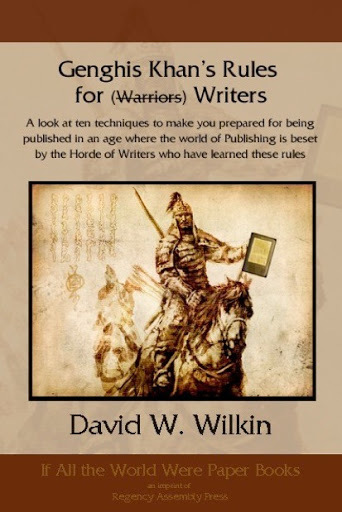D.W. Wilkin's Blog, page 14
November 17, 2016
Regency Personalities Series-Adam Gillies Lord Gillies
Regency Personalities Series
In my attempts to provide us with the details of the Regency (I include those who were born before 1811 and who died after 1795), today I continue with one of the many period notables.
Adam Gillies Lord Gillies
29 April 1760 – 24 December 1842
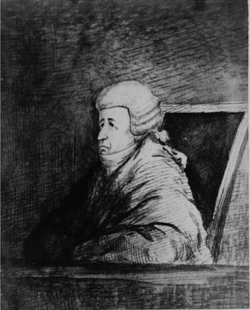
Adam Gillies Lord Gillies
Adam Gillies Lord Gillies was born in Brechin, Forfarshire on 29 April 1766, the son of Robert and Margaret (née Smith) Gillies, he was the younger brother of historian John Gillies.
Gillies was admitted an advocate on 14 July 1787. From 1806, he was the sheriff-depute of Kincardineshire. From 1811 to 1842, he was a Senator of the College of Justice, based in Edinburgh. In the 1830s he is listed as living at 16 York Place in Edinburgh’s New Town.
He died on 24 December 1842 at Leamington Spa.
His body was returned to Edinburgh and he was buried in a private vault in the now sealed south-west section of Greyfriars Kirkyard known as the Covenanter’s Prison. His wife Elizabeth Carnegy lies with him.


Rules for better writing from Genghis Khan
The Rules for Writers
Those who follow me for a long time know that I also write in other fields aside from Regency Romance and the historical novels I do.
A little while ago, before the end of 2011 and the 2011 NaNoWriMo, (where I wrote the first draft of another Regency) I started work on a project about writing.
The premise was what one should think about when starting and working on a project. I came up with 10 rules to follow in a quest to become a writer and tackle that novel.
Here are The 10 Rules:
1) Read like a writer
2) Have a good story
3) Your work will be Thematic
4) Plot: The seven deadly ones
5) Characters will carry your tale, near and far
6) Words are your warriors
7) Stories are structured
8) All tales building to a Crescendo
9) Genghis edits history, shouldn’t you as well
10) Act like a writer
So it is now released. For $4.99 you can get this treatise on honing your skills.
Barnes and Noble for your Nook
Genghis Khan came from the Steppes of Mongolia, a family torn apart by neighboring tribes, to unite those tribes, or defeat them, and then conquer the greater part of the known world. His heirs would continue his conquest right to the edge of western society. The world feared the Mongols, and Genghis. Now, you can benefit, as a writer from the lessons he has to impart on how, with the changing world of publishing, you can perfect your work and write not only good material for this new age of book publishing. But can write great work for this new age. 10 simple lessons, and you will be on your way to conquering the bookshelves of the 21st century. This short book will have you learning all you really need to know to elevate your writing to the next level. These simple lessons will start you on the road to better writing as a member of the Horde in no time.
Feedback
If you have any commentary, thoughts, ideas about the book (especially if you buy it, read it and like it
November 16, 2016
Regency Personalities Series-Lieutenant-Colonel Sir Richard Fletcher
Regency Personalities Series
In my attempts to provide us with the details of the Regency (I include those who were born before 1811 and who died after 1795), today I continue with one of the many period notables.
Lieutenant-Colonel Sir Richard Fletcher
1768 – 31 August 1813
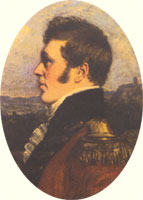
Richard Fletcher
Lieutenant-Colonel Sir Richard Fletcher’s exact date of birth is obscure. It is known however that the year was 1768 and his father was a clergyman. On 27 November 1796, at Plymouth, he married Elizabeth Mudge the daughter of a doctor. Fletcher and his wife went on to have five children together; two sons and three daughters. Though Fletcher was buried near to where he was killed at San Sebastián, a monument to his memory, purchased by the Royal Engineers, stands at the western side of the north aisle in Westminster Abbey, London.
Richard Fletcher enrolled as a cadet in the Royal Military Academy at Woolwich on 7 October 1782. He began his career in the Royal Artillery where he became a second-lieutenant on 9 July 1788, before joining the Royal Engineers on 29 June 1790. Fletcher was promoted to lieutenant on 16 January 1793 and when France declared war on Britain, later that year, he was sent to serve in the West Indies.
While in the West Indies, Fletcher played an active role in the successful attacks on the French colonies of Martinique, Gaudeloupe and St Lucia, which occurred between February and April 1794. It was during the capture of St Lucia he received a gunshot wound. Fletcher was transferred to the British controlled island of Dominica where he was appointed chief engineer before being sent home at the end of 1796.
While in England, Fletcher served as adjutant to the Royal Military Artificers in Portsmouth until December 1798 when he was sent to Constantinople (now Istanbul) to act as an advisor to the Ottoman Government. Intending to travel through Hanover, Fletcher set sail from England but his ship was wrecked near the mouth of the river Elbe and Fletcher was forced to walk across two miles of ice before reaching land. After three months travelling through Austria and Ottoman territories in the Balkans, Fletcher finally arrived in Constantinople on 29 March 1799. In June 1799, Fletcher, alongside Ottoman troops, advanced into Syria, forcing Napoleon to forgo his siege of Acre and retreat to Egypt.
During 1799, after his return from Syria, Fletcher took part in the preparation of the defences for the Turks in the Dardanelles. After a spell with Ottoman forces in Cyprus, Fletcher returned to Syria in June 1800, to oversee the construction of fortifications at Jaffa and El Arish. Fletcher served under Sir Ralph Abercromby in December 1800 at Marmaris Bay, practising beach assaults for the expected invasion of Egypt the following year. An expedition to reconnoitre the Egyptian port of Alexandria, led to Fletcher’s capture when, while returning to his ship after a night reconnaissance mission ashore, Fletcher was intercepted by a French patrol vessel. He was held prisoner in Alexandria until its capture on 2 September 1801.
In October 1801, when the general armistice was signed, Fletcher returned to England, having been promoted to captain while he was imprisoned and later decorated by the Ottoman Empire for his services. The Treaty of Amiens was signed on 25 March 1802 but peace was shortlived and war broke out in May the following year. Fletcher was again sent to Portsmouth where he helped bolster the defences of Gosport. Promoted to major on 2 April 1807, Fletcher took part in the Battle of Copenhagen in August that year.
Soon after the start of the Peninsular War, Fletcher was sent to Portugal. He was part of the force that occupied Lisbon when the French withdrew following the Convention of Sintra, after which he accompanied Wellington as his chief engineer in the field. Promoted to lieutenant-colonel in the army, 2 March 1809, and then the Royal Engineers, 24 June 1809, he fought at the Battle of Talavera (27-28 July 1809) for which he received a mention in dispatches.
It was while Wellington was making preparations for a retreat to Portugal, that Fletcher became famous for one of the greatest military engineering feats in history. The celebrated Lines of Torres Vedras were constructed on the narrow peninsula between the Atlantic and the Tagus. These three lines of defence; the first 6 miles in front of the principal one and the last 20 miles behind, were intended to protect Lisbon and provide a line of retreat for the British to their ships should it be required. Fletcher began work on these defences on 20 October 1809, using Portuguese soldiers and civilians for the bulk of the labour. Rocky slopes were steepened and reinforced, and defiles were obstructed with forts and earthworks; trees and vegetation were removed to deprive the enemy of cover and sustenance, watercourses were dammed inorder to construct impassable lakes or swamps and any buildings were either fortified or destroyed. Fortifications guarded every approach and batteries commanded the highground, while a system of signal stations and roads ensured that troops could be sent quickly to where they were needed the most. And all was conducted with the utmost secrecy so that neither Napoleon nor even the British Government were aware of the lines’ existence until Wellington was obliged to retreat behind them later the following year.
In July 1810, shortly before completion of the lines, Fletcher left the fortifications to serve alongside Wellington once more in the field, and was thus at the Battle of Buçaco (27 September 1810) where he again distinguished himself and was mentioned in dispatches. Wellington fell back to the Lines of Torres Vedras in October 1810, pursued by Marshal Masséna, who was shocked to find such extensive defences, having been promised by Portuguese rebels that the road to Lisbon was an easy one. Wellington’s superiors were equally surprised to hear about the defences when they later received his report. After an unsuccessful attack on 18 October, Masséna initially retreated to Santarém but when his supplies ran out the following March, he abandoned any thoughts of another attempt and headed north.
Fletcher, as part of Wellington’s forces, chased Masséna to Sabugal where, after some skirmishing, on 2 April, Masséna was finally brought to action at the Battle of Sabugal; the first of a number of engagements as Wellington and Masséna competed for position along the Portuguese and Spanish border. After forcing Masséna to abandon Sabugal, Wellington turned his attention towards Almeida and Ciudad Rodrigo; two fortresses that guarded the northern approach to Portugal. Wellington had planned to capture both while Masséna’s army was still in disarray but the loss of Badajoz to Marshall Soult on 11 March, which protected the south, compelled him to divide his force. Wellington sent a quarter of his troops to reinforce General Beresford’s, with orders to re-take Badajoz, while his remaining force, which included Fletcher, would lay siege to Almeida. Masséna, now with a superior force, marched to relieve Almeida and Wellington, not wishing to fight under those conditions, withdrew to the town of Fuentes d’Onoro. The town changed hands a number of times during a battle that took place over 3 days (3 – 5 May), but ultimately remained under British control. Massénna’s troops were neither able to reach the fort nor stay in the open and were thus forced to leave on 8 May. Wellington continued his siege and took possession of Almeida two days later.
Fletcher was again mentioned in dispatches when serving as chief engineer at the second siege of Badajoz (19 May – 10 June 1811). The engineers suffered many casualties in their attempts to dig the thin rocky soils around a fort that had been repaired and reinforced since the last unsuccessful siege. Running short of ammunition and having sustained heavy losses; and with news that French reinforcements were on the way, Wellington withdrew his forces to Elvas on 10 June. Fletcher was also present when Ciudad Rodrigo (7 – 19 January 1812) and, on the third attempt, Badajoz (17 March – 16 April 1812) were captured. In the latter engagement it was Fletcher who identified the weak point in the defences and so ultimately decided where the main attack should be. On 19 March, Fletcher was shot in the groin when a French sortie in the fog reached the trenches where he and his engineers were working. His injury might have been much worse if it wasn’t for a Spanish Silver Dollar in his pocket which took the main force of the musket ball. Fletcher’s injury had him confined to his tent where Wellington, desperately short of good engineers, visited him daily for advice. Fletcher returned to England to recover, and was made a baronet on 14 December 1812, and awarded a pension of £1.00 per diem. He received the Portuguese award of the Order of the Tower and Sword; and the Army Gold Cross for Talavera, Bussaco, Ciudad Rodrigo, and Badajoz.
Fletcher returned to the Peninsular in 1813 and received a further mention in dispatches for his role in the Battle of Vitoria on 21 June. Fletcher directed the sieges of Pamplona and San Sebastián. He was killed in action during the final assault on San Sebastián on 31 August 1813.


An Unofficial Guide to how to win the Scenarios of Rollercoaster Tycoon 3
An Unofficial Guide to how to win the Scenarios of Rollercoaster Tycoon 3
I have been a fan of this series of computer games since early in its release of the very first game. That game was done by one programmer, Chris Sawyer, and it was the first I recall of an internet hit. Websites were put up in dedication to this game where people showed off their creations, based on real amusement parks. These sites were funded by individuals, an expense that was not necessarily as cheap then as it is now. Nor as easy to program then as it might be to build a web page now.
Prima Books released game guides for each iteration of the game, Rollercoaster Tycoon 1, Rollercoaster Tycoon 2 and Rollercoaster Tycoon 3 (RCT3) but not for the expansion sets. And unlike the first two works, the third guide was riddle with incorrect solutions. As I played the game that frustrated me. And I took to the forums that Atari, the game publisher hosted to see if I could find a way to solve those scenarios that the Prima Guide had written up in error. Not finding any good advice, I created my own for the scenarios that the “Official” Guide had gotten wrong.
Solutions that if you followed my advice you would win the scenario and move on. But if you followed the
“Official” version you would fail and not be able to complete the game. My style and format being different than the folks at Prima, I continued for all the Scenarios that they had gotten right as well, though my solutions cut to the chase and got you to the winner’s circle more quickly, more directly.
My contributions to the “Official” Forum, got me a place as a playtester for both expansions to the game, Soaked and Wild. And for each of these games, I wrote the guides during the play testing phase so all the play testers could solve the scenarios, and then once again after the official release to make changes in the formula in case our aiding to perfect the game had changed matters. For this, Atari and Frontier (the actual programmers of the game) placed me within the game itself.
And for the longest time, these have been free at the “Official” Forums, as well as my own website dedicated to the game. But a short time ago, I noticed that Atari, after one of its bankruptcies had deleted their forums. So now I am releasing the Guide for one and all. I have added new material and it is near 100 pages, just for the first of the three games. It is available for the Kindle at present for $2.99.
(Click on the picture to purchase)
Not only are all 18 Scenarios covered, but there are sections covering every Cheat Code, Custom Scenery, the famous Small Park Competition, the Advanced Fireworks Editor, the Flying Camera Route Editor which are all the techniques every amusement park designer needs to make a fantastic park in Rollercoaster Tycoon 3.
Scenarios for RCT 3
1) Vanilla Hills
2) Goldrush
3) Checkered Flag
4) Box Office
5) Fright Night
6) Go With The Flow
7) Broom Lake
8) Valley of Kings
9) Gunslinger
10) Ghost Town
11) National Treasure
12) New Blood
13) Island Hopping
14) Cosmic Crags
15) La La Land
16) Mountain Rescue
17) The Money Pit
18) Paradise Island


November 15, 2016
Regency Personalities Series-Sarah Austin (Translator)
Regency Personalities Series
In my attempts to provide us with the details of the Regency (I include those who were born before 1811 and who died after 1795), today I continue with one of the many period notables.
Sarah Austin (Translator)
1793 – 8 August 1867
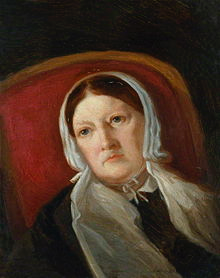
Sarah Austin
Sarah Austin was born in Norwich, England in 1793, she was the youngest child of John Taylor, a yarn maker and hymn writer from a locally well-known Unitarian family. Her education was overseen by her mother, Susannah Taylor. She became conversant in Latin, French, German and Italian. Her six brothers and sisters included Edward Taylor, a singer and music professor, John Taylor, a mining engineer, Richard Taylor, a printer and editor and publisher of scientific works. Family friends included Dr James Alderson and his daughter Amelia Opie, Henry Crabb Robinson, the banking Gurneys and Sir James Mackintosh.
Sarah grew up to be an attractive woman. She caused some surprise by marrying John Austin on 24 August 1819. During the first years of their married life they lived a wide social life in Queen’s Square, Westminster. John Stuart Mill testified the esteem which he felt for her by the title of Mutter, by which he always addressed her. Jeremy Bentham was also in their circle. She travelled widely, for instance to Dresden and Weimar. According to a modern scholar, Austin “tended to be austere, reclusive, and insecure, while she was very determined, ambitious, energetic, gregarious, and warm. Indeed her affections were so starved that in the early 1830s she had a most unusual ‘affair’ with Hermann Pückler-Muskau, a German prince whose work she translated. It was conducted solely by an exchange of letters and she did not meet her correspondent until their passions had cooled.”
The only child of the Austins’ marriage, Lucie was likewise a translator of German works. She married Alexander Duff-Gordon. Her 1843 translation of Stories of the Gods and Heroes of Greece by Barthold Georg Niebuhr was erroneously ascribed to her mother. The family history was recorded in Three Generations of English Women (1893), by Sarah Taylor’s granddaughter, Mrs Janet Ross.
Austin’s literary translations were a principal means of financial support for the couple. She also did much to promote her husband’s works during his life and published a collection of his lectures on jurisprudence after his death. In 1833, she published Selections from the Old Testament, arranged under heads to illustrate the religion, morality, and poetry of the Hebrew Scriptures. “My sole object has been,” she wrote in the preface, “to put together all that presented itself to my own heart and mind as most persuasive, consolatory, or elevating, in such a form and order as to be easy of reference, conveniently arranged and divided, and freed from matter either hard to be understood, unattractive, or unprofitable (to say the least) for young and pure eyes.” In the same year, she published one of the translations by which she is best known: Characteristics of Goethe from the German of Falk, Von Müller, and others, with valuable original notes, illustrative of German literature. Her own criticisms are few, but highly relevant.
In 1834, Austin translated The Story without an End by Friedrich Wilhelm Carové, which was often reprinted. In the same year she translated the famous report on the State of Public Instruction in Prussia, addressed by Victor Cousin to Count Montalivet, minister of public instruction. In the preface she pleads eloquently for the cause of national education. “Society,” she says, “is no longer a calm current, but a tossing sea; reverence for tradition, for authority, is gone. In such a state of things who can deny the absolute necessity of national education?” In 1839 she returned to the same subject in a pamphlet, originally published as an article in the Foreign Quarterly Review, in which she argued from the experience of Prussia and France for the need to establish a national system of education in England.
One of her last publications (1859) consisted of two letters addressed to the Athenæum, on girls’ schools and on the training of working women, which show that she had modified her opinions. Speaking of the old village schools, she admits that the teachers possessed little book lore. They were often widows
better versed in the toils and troubles of life than in chemistry or astronomy…. But the wiser among them taught the great lessons of obedience, reverence for honoured eld, industry, neatness, decent order, and other virtues of their sex and stations, and trained their pupils to be the wives of working men. In 1827 Mrs Austin left with her husband for Germany and settled in Bonn. She collected in her long residence abroad materials for her work, Germany from 1760 to 1814, which was published in 1854 and still holds its place as an interesting and thoughtful survey of German institutions and manners.
In the autumn of 1836 she accompanied her husband to Malta, busying herself while there with investigations into the remains of Maltese art. On their return from that island, she and her husband returned to Germany. Thence they passed to Paris, where they remained until they were driven home by the revolution of 1848. In 1840 she translated Ranke’s History of the Popes, which was warmly praised by Thomas Babington Macaulay and Henry Hart Milman. When this translation was published, her intimate friend Sir George C. Lewis wrote to her saying, “Murray is very desirous that you should undertake some original work. Do you feel a ‘Beruf’ of this sort?” However, she felt no such “Beruf” and most of her subsequent works were translations.
After her husband’s death in 1859 Sarah Austin produced a coherent and near-complete edition of his Lectures on Jurisprudence, an enormous task that required assembling his scattered notes and marginalia. Her modesty regarding her contribution to her husband’s publications was recognized only by later authors She also edited the Memoirs of Sydney Smith (1855) and Lady Duff-Gordon’s Letters from Egypt (1865).
Sarah Austin’s style is clear, unaffected and forcible. She adopted a high standard for the duties of a translator and sought to conform to it rigorously. “It has been my invariable practice,” she said, “as soon as I have engaged to translate a work, to write to the author of it, announcing my intention, and adding that if he has any correction, omission, or addition to make, he might depend on my paying attention to his suggestions.” She did much to make the best minds of Germany familiar to Englishmen and she left a literary reputation due as much to her conversation and wide correspondence with illustrious men of letters as to her works.
The following is a list of her principal works, besides those named already:
Translation of a Tour in England, Ireland, and France by a German Prince, (London, 1832), after Pückler’s Briefe eines Verstorbenen
Translation of Raumer’s England in 1835, 1836.
Fragments from German Prose Writers, 1841.
History of the Reformation in Germany and History of the Popes (1840), from the German of Leopold von Ranke
Sketches of Germany from 1760 to 1814 (1854), dealing with political and social circumstances during that period.
Translation of François Guizot on the Causes of the Success of the English Revolution, 1850.
Memoirs of the Duchess of Orleans, 1859.
Lady Duff Gordon’s Letters from Egypt, edited by Mrs. Austin, 1865.
Letters of Sydney Smith, 1855 (second volume of Lady Holland’s Life and Letters).
Sarah Austin died at Weybridge, Surrey, on 8 August 1867. She was buried next to her husband in the Weybridge churchyard. Her estate, valued at less than £5000, received probate on 28 August 1867, the executor being her son-in-law, Sir Alexander Cornewall Duff-Gordon.


Two Peas in A Pod, A Regency Romance
Two Peas in a Pod has now passed the exclusivity to Amazon test and is available in wider release, electronically (digitally) for other readers now. We sold a few copies on Amazon but nothing to warrant an exclusivity period. Amazon is too big and too full of itself.
Two Peas in a Pod is still available as a Trade paperback click here to order Regency Assembly Press.
$3.99 for an electronic copy. The Trade Paperback, due to publishing costs and the cut that Amazon takes continue to see a Trade Paperback costing $15.99 (The much hyped royalties that we writers are supposed to get is nowhere near what the news reports say. Most of that price is taken by Amazon.)
iBookstore (These are my books
and still at Amazon
Here is a picture, which of course you can click on to go fetch the book:
Love is something that can not be fostered by deceit even should one’s eyes betray one’s heart.
Two brothers that are so close in appearance that only a handful have ever been able to tell them apart. The Earl of Kent, Percival Francis Michael Coldwell is only older than his brother, Peregrine Maxim Frederick Coldwell by 17 minutes. They may have looked as each other, but that masked how they were truthfully quite opposite to one another.
For Percy, his personality was one that he was quite comfortable with and more than happy to let Perry be of a serious nature. At least until he met Veronica Hamilton, the daughter of Baron Hamilton of Leith. She was only interested in a man who was serious.
Once more, Peregrine is obliged to help his older brother by taking his place, that the Earl may woo the young lady who has captured his heart. That is, until there is one who captures Peregrine’s heart as well.
There is a visual guide to Two Peas in a Pod  as well at Pinterest and a blog post here.
as well at Pinterest and a blog post here.


November 14, 2016
Regency Personalities Series-William Eliot 2nd Earl of St Germans
Regency Personalities Series
In my attempts to provide us with the details of the Regency (I include those who were born before 1811 and who died after 1795), today I continue with one of the many period notables.
William Eliot 2nd Earl of St Germans
1 April 1767 – 19 January 1845
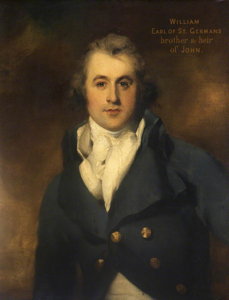
William Eliot
William Eliot 2nd Earl of St Germans was born at Port Eliot, Cornwall, the third son of Edward Craggs-Eliot, 1st Baron Eliot and his wife Catherine (née Elliston). He was educated at Pembroke College, Cambridge, taking an M.A. in 1786.
From November 1791 until 1793 he was a Secretary of Legation at Berlin, from 1793 to 1794 Secretary of Embassy and Minister Plenipotentiary at The Hague and from 1796 Minister Plenipotentiary to the Elector Palatine and to the Diet of Ratisbon. Eliot also sat as Tory Member of Parliament for St Germans from 1791 to 1802 and for Liskeard from 1802 to 1823 and served as a Lord of the Admiralty from 1800 to 1804 and as Parliamentary Under-Secretary of State for Foreign Affairs from 1804 to 1805. In 1823 he succeeded his elder brother as second Earl of St Germans and entered the House of Lords.
Lord St Germans married four times.
On 30 November 1797 at Trentham, Staffordshire to Lady Georgina Augusta Leveson-Gower (13 April 1769 – 24 March 1806). Georgina was the daughter of Granville Leveson-Gower, 1st Marquess of Stafford. They had one son and three daughters:
Edward Granville Eliot, 3rd Earl of St Germans (29 August 1798 – 7 October 1877)
Lady Caroline Georgina Eliot (27 July 1799 – April 1865)
Lady Susan Caroline Eliot (12 April 1801 – 15 January 1835)
Lady Charlotte Sophia Eliot (28 May 1802 – 8 July 1839)
On 13 February 1809 at Heytesbury, Wiltshire, to Letitia A’Court (d. 20 January 1810), with no issue.
On 7 March 1812 at the Earl of Powis’ House, Berkeley Square, London, to Charlotte Robinson (1790 – 3 July 1813), with no issue.
On 30 August 1814 at Walton, Warwickshire, to Susan Mordaunt (d. 5 February 1830), with no issue.


A Trolling we Will Go Omnibus: The first three Fantasy stories of Humphrey and Gwendolyn
A Trolling We Will Go Omnibus:The Early Years
Not only do I write Regency and Romance, but I also have delved into Fantasy.
The Trolling series, (the first three are in print) is the story of a man, Humphrey. We meet him as he has left youth and become a man with a man’s responsibilities.
We follow him in a series of stories that encompass the stages of life. We see him when he starts his family, when he has older sons and the father son dynamic is tested.
We see him when his children begin to marry and have children, and at the end of his life when those he has loved, and those who were his friends proceed him over the threshold into death.
All this while he serves a kingdom troubled by monsters. Troubles that he and his friends will learn to deal with and rectify.
Here are the first three books together as one longer novel.
A Trolling We Will Go, Trolling Down to Old Mah Wee and Trolling’s Pass and Present.
Available in a variety of formats.
For $6.99 you can get this fantasy adventure.
Barnes and Noble for your Nook
The stories of Humphrey and Gwendolyn. Published separately in: A Trolling we Will Go, Trolling Down to Old Mah Wee and Trollings Pass and Present.
These are the tales of how a simple Woodcutter and an overly educated girl help save the kingdom without a king from an ancient evil. Long forgotten is the way to fight the Trolls.
Beasts that breed faster than rabbits it seems, and when they decide to migrate to the lands of humans, their seeming invulnerability spell doom for all in the kingdom of Torahn. Not only Torahn but all the human kingdoms that border the great mountains that divide the continent.
Feedback
If you have any commentary, thoughts, ideas about the book (especially if you buy it, read it and like it
November 13, 2016
Regency Personalities Series-Augusta Leigh
Regency Personalities Series
In my attempts to provide us with the details of the Regency (I include those who were born before 1811 and who died after 1795), today I continue with one of the many period notables.
Augusta Leigh née Byron
26 January 1783 – 12 October 1851
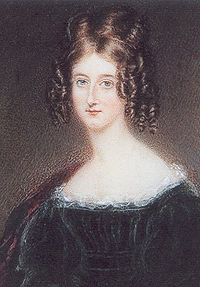
Augusta Leigh
Augusta Leigh ‘s mother died soon after her birth. Her grandmother, Lady Holderness, raised Augusta for a few years, but died when Augusta was still a young girl, and the child divided her time among relatives and friends.
Augusta later married her cousin, Lt. Colonel George Leigh (1771–1850), son of General Charles Leigh (1748–1815) and his wife Frances Byron, her paternal aunt. She had seven children by him.
Richard Temple-Nugent-Brydges-Chandos-Grenville, 1st Duke of Buckingham and Chandos, noted the wedding with disdain in his diary: “Poor Augusta Leigh marries today! Poor thing! I pity her connecting herself with such a Family, and such a fool! However she has nobody to blame but herself.” The marriage turned out unhappily, because he fell into dissolution and gambled away all his money. At the end, he left his wife and children nothing but debts.
There was personal unhappiness too, when Henry Trevanion, husband of one daughter Georgiana left her in 1829–30 (after four years of marriage) for her younger sister Elizabeth Medora (allegedly fathered by Lord Byron). Medora and Henry Trevanion remained together for several years in France, before finally separating. The deserted Georgiana, doubly betrayed, lacked the funds to apply for a Parliamentary divorce unlike another similarly wronged wife Louisa Turton (Turton vs Turton).
Augusta’s half-brother, George Lord Byron, didn’t meet her until he went to Harrow School and even then only very rarely. From 1804 onwards, however, she wrote to him regularly and became his confidante especially in his quarrels with his mother. Their correspondence ceased for two years after Byron had gone abroad, and was not resumed until she sent him a letter expressing her sympathy on the death of his mother, Catherine.
Not having been brought up together they were almost like strangers to each other. But they got on well together and appear to have fallen in love with each other. When Byron’s marriage collapsed and he sailed away from England never to return, rumours of incest, a very serious and scandalous offence, were rife. Some say it was because of his fear of prosecution that Byron abandoned his country.
There is some evidence to support the incest accusation. Augusta Leigh’s third daughter, born in spring of 1814, was christened Elizabeth Medora Leigh. A few days after the birth, Byron went to his sister’s house Swynford Paddocks in Cambridgeshire to see the child, and wrote, in a letter to Lady Melbourne, his confidante: “Oh, but it is not an ape, and it is worth while” (a child of an incestuous relationship was thought likely to be deformed).
“Medora” is the name of one of the heroines in Byron’s poem The Corsair, which was written at Newstead Abbey during the three weeks in January 1814 when the poet and a pregnant Augusta were snowbound there together. However, Augusta’s husband, George, never questioned the paternity of Medora, and she grew up among her brothers and sisters unaware that she might be the first of Byron’s three daughters.
In fact, they were entertained by his in-laws at the family home in Leicestershire for several weeks after Byron had married Annabella Milbanke. At that time Augusta wrote to her sister-in-law about Medora, saying: “The likeness to Byron… makes her very good-humoured”. In another she wrote, knowing it would be shown to Byron, “Here comes Medora”.
Medora did become aware of her possible paternity years later and she and her child were assisted financially by Augusta Ada Byron (better known by her later name of Ada Lovelace), who was also a source of emotional support when Medora fell on hard times. Neither Medora nor her mother met Byron’s daughter by Claire Clairmont, Allegra Byron, who died at age five in 1822 in an Italian convent.
Medora had 6 (possible half) siblings by her mother and her husband Colonel George Leigh of the 10th Dragoons. One of her sisters, Georgiana Augusta Leigh, married Henry Bettesworth Trevanion. The marriage between Georgiana and Henry was not harmonious and Medora was often used as a “chaperone”. Medora’s life became more complicated as a result.
Medora’s father, Colonel Leigh, subsequently discovered that she was pregnant with a child by Henry Trevanion (her brother-in-law). Colonel Leigh sent Medora to an establishment in Maida Vale, London, where upper-class girls went to have their illegitimate offspring. Henry arranged for her escape.
Henry Bettesworth Trevanion and Medora went to Normandy, where her child was stillborn. However, Henry was so infatuated with Medora that he wanted a living child by her.
Henry ran away again with Medora and prevailed on her to set up in an ancient, tumble-down chateau near Morlaix in France. There they lived as brother and sister and passed as such, for they looked very much alike. With no idea of money on either side they were reduced to poverty; as aristocratic delinquents they never considered turning their hands to work. In exile they used the surname AUBIN.
By 1833 Henry and Medora were living in Brittany, at the Breton Carhaix.
Medora became a Catholic and declared her intention of entering a convent. However, she got pregnant again by Henry. The Abbess was tolerant and found Medora lodgings outside the convent, where a living child was born on 19 May 1834; she was baptised Marie Violette Trevanion on 21 May 1834.
Due to poverty and illness, the pair eventually had to beg their families for money. Henry’s father, Major John Purnell Bettesworth Trevanion of Caerhays Castle, Cornwall, thought Medora was to blame for the situation. He sent one of Henry’s uncles to Brittany to persuade Henry to return to England. Henry refused to leave. Augusta Maria (Byron) Leigh was now keeping her other daughter Georgiana’s three children by Henry, but sent what money she could to Medora. However, Augusta eventually lost touch with Medora, who had become ill in Brittany after a series of miscarriages.
In 1838, Henry Trevanion and Medora Leigh finally parted permanently. In an autobiography, Medora later wrote of Henry that he “gave himself up to religion and shooting”. Henry died in 1855 in Brittany, France.
Medora left for the south of France with her daughter Marie Violette, who later entered a convent and became known as Sister Saint Hillaire. Marie Violette is said to have died within the order she joined in 1873.
Medora travelled in poverty and eventually met Monsieur Jean-Louis Taillefer whom she married in Aveyron, France on 23 August 1846. In 1846 they had a son, Elie Taillefer, who lived until 22 June 1900. Marie Violette took the surname of her stepfather and became Marie Violette Taillefer.
Medora died on 28 August 1849 at Lapeyre, Aveyron, southern France, and is believed to be buried there.


RAP (Regency Assembly Press) in need of Beta-Readers
Regency Assembly
Press
is looking for
Beta Readers
One novel is ready for Beta Reading
We have a continuation of Pride and Prejudice with Ms Caroline Bingley and her fortune at stake:
Do we think that Mr Hurst married his Bingley Bride without incentive? It is highly probable that Caroline Bingley, even though she has a sharp, acerbic tongue, still is in possession of a fortune and an astute fortune hunter who deciphers this may soon be on the road to, if not a happy marriage, one with financial security.
Please respond or send an email if you are interested



